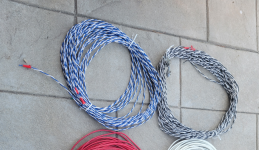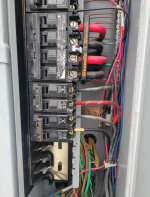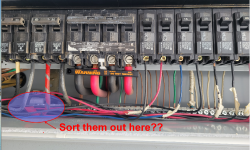- Location
- Wisconsin
- Occupation
- PE (Retired) - Power Systems
I have never seen this product line, but it looks like they are using some type of current transducer rather than a typical current transformer. I have never seen 'instrumentation cable" used for CT's with 0-5A AC outputs, while it is common on transducer outputs.And from page 12 is the true recommendation:
Consumption meter lead wires can be extended to be installed in panels away from where the lQ Gateway is located. These wires may be extended to a maximum of 1.5 Ohms per wire and 3 Ohms for both wires end to end. Appropriately rated, 0.75 mm2 to 1.5 mm2, twisted-pair wire cable is recommended. Install in accordance with all applicable electrical codes and standards.
Table 1: Cable manufacturer and description
Manufacturer Cable description Recommended length extension Elcon Cables Elcon/LAPP instrumentation cable 1.5 mm2 (1 or 3 core) 100 m (328 ft) Clipsal CBus Cat. 5e rated 4 pair unshielded twisted pair (UTP) cable 50 m (164 ft) Belden Belden 8471NH unshielded twisted pair cable (1.33 mm2) 75 m (246 ft)
I too have been searching for an economical solution to this issue.
I called Enphase because I need to do a 50 ft extension. They were very adamant that the wires needed to be twisted for that length to minimize noise.
To throw another wrench in the mix, the Cat5e cable they recommend in the table is 24awg and doesn't even follow their own sizing guidelines in the paragraph above.
Also, as a tangent response to a point that was brought up in the thread, twisting a pair of wire neutralizes the magnetic fields generated by each conductor in the pair itself, not external fields.
This may be another case where a marketing team has used language differently than our 'power' industry does.




